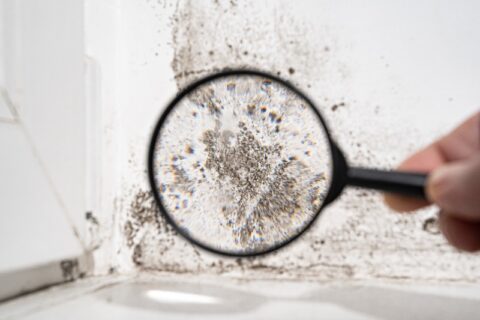Common Places to Find Mold in Your House
Mold is an unwelcome guest in your home, leading to health issues like allergic reactions, respiratory distress, and asthma attacks. It can also eat away at your home’s structure, causing significant damage over time. Understanding where mold can thrive, recognizing the signs of an infestation, and cleaning it up promptly can save you from costly repairs and health hazards.
Common Places Where Mold Thrives
Mold grows in damp, dark, warm places. Here are some of the most common areas where house mold thrives:
- Bathrooms: Excessive moisture and limited ventilation make bathrooms a paradise for mold spores. You may find mold on walls, floors, or ceilings, especially near the shower or tub.
- Kitchens: The moisture from cooking and potential leaks from sinks and appliances create the perfect conditions for mold growth in the kitchen.
- Basements: These subterranean spaces are often dark and poorly ventilated, leading to a proliferation of mold spores.
- Attics: Roof leaks and poor ventilation allow mold to flourish above your living space.
- Windows: Condensation on window panes caused by high indoor humidity promotes mold growth around window sills and frames.
Identifying Mold Growth
How can you tell if you have mold in your house? Spotting mold is straightforward if you know what to look for:
- Visual signs: Watch for discolored spots on walls, ceilings, and other surfaces. Mold comes in various colors, including black, green, white, and orange.
- Musty odors: If an area smells perpetually damp or musty, it might be harboring mold growth.
- Physical symptoms: Prolonged mold exposure can cause heightened allergies, respiratory issues, or irritation of the eyes, nose, and throat.
- Moisture problems: The chance of mold growth increases if your home has a history of flooding, leaks, condensation problems, or high humidity.
- Professional mold inspection: If you suspect mold but can’t visually confirm it, a professional inspection involving moisture meters and infrared cameras may help.
Mold Remediation & Prevention Tips
If you discover mold in your home, remove it quickly and carefully. Relatively small, contained infestations on non-porous surfaces, like tile or glass, can often be handled without professional help.
Apply diluted bleach (one cup per gallon of water) to the moldy area using a scrub brush. After scrubbing gently, rinse and dry the area thoroughly to prevent further mold growth. Wear rubber gloves, a mask, and goggles while doing this to protect your hands, respiratory system, and eyes. Also, ventilate the room adequately to disperse mold spores and bleach fumes.
However, in cases of large infestations over 10 square feet or when porous surfaces like drywall, carpet, or wood are involved, you may need a professional mold remediation service. Professionals have the appropriate training and tools to deal with stubborn or large-scale infestations.
Of course, preventing mold is easier than dealing with a full-blown infestation. To deter mold growth, ventilate your home to reduce moisture levels, fix plumbing and roof leaks promptly, and run a dehumidifier to decrease the relative humidity.
Time to Call Pacific Flood Restoration
With punctual, dependable service from Pacific Flood Restoration, you’ll reclaim your home from the clutches of mold growth faster than you thought possible. We take pride in offering 24/7 emergency service, meaning we’re always here when you need us most. Customers rave about our high level of customer care, transparency, and professionalism. For mold remediation in San Diego, CA, call us at 760-815-3033 or contact us online today.


